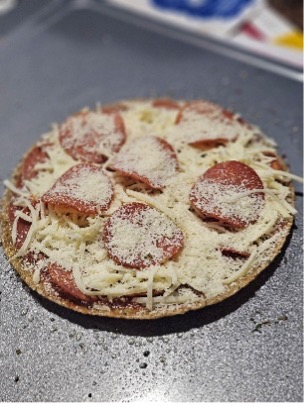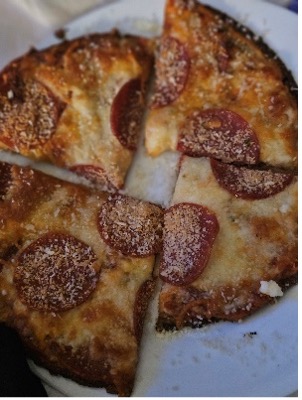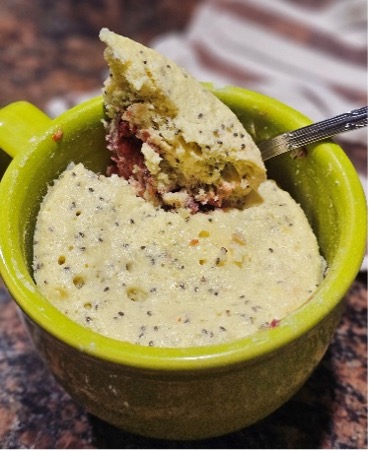Whether you are going through bariatric surgery or a non-surgical weight loss program, you’ve very likely been told to prioritize protein sources in your nutrition. It can be a challenge to meet your protein goals, but it’s so important because of the multitude of benefits and functions of protein, particularly in a weight loss journey. In fact, the word “protein” is derived from a Greek word meaning “primary.” Protein does not have to be boring, so we will share some creative ways to increase the protein into your routine.
“So, why is protein so important for weight loss?”
Protein, fats and carbohydrates are the three macronutrients in the foods we consume. Macronutrients are the basic types of nutrition that your body uses and stores in different ways. There are many functions in the body that rely on protein, including providing growth and structure to our muscles and other tissues, supplying energy and transporting nutrients, working in the body’s metabolism and immune function, healing the body from illness and injury, and helping to maintain overall balance. In addition to functional and foundational benefits, protein also has some very practical benefits for weight loss. Consuming protein allows you to feel full and satisfied which could mean smaller portions and less snacking. Additionally, protein builds muscle, and the more muscle you have on your body, the more efficient your metabolism will be. More specifically, a pound of muscle on your body burns 7 to 10 calories of energy in a day, whereas a pound of fat burns between 2 and 5 calories daily. So, if you are building muscle at the same time you are losing fat, this can increase your body’s overall metabolism both at rest as well as during physical activity. Also, as you lose weight, naturally some of that weight will be muscle, and this can cause profound fatigue. So, if you are feeling low on energy, you might not be getting enough protein to build and sustain your body’s muscle content. Overall, protein can help you feel stronger and perform better while you’re losing weight.
“How much protein do I need?”
This is highly variable depending on your lifestyle and your goals. If you are seeing a registered dietitian on your weight loss journey, make sure to talk with them about your protein goals. Your dietitian will be able to make a specific recommendation about exactly how much you should consume each day. Generally speaking, about 30% of your calories should be from protein if you are trying to lose weight. So, if you consume 1500 calories per day, your protein goal will be about 112 grams per day. Again, this is an approximate suggestion and will vary based on many factors including current weight and goal weight, gender, how much and what type of exercise you do, food preferences and underlying health conditions. Additionally, bariatric patients will have a much higher percentage of calories from protein particularly in the weeks and months immediately following surgery when stomach capacity is extremely limited.
“Is there such a thing as TOO MUCH protein?”
While getting the right amount of protein each day is important, it’s also necessary to spread it out over the whole day to give your body adequate time to process it. Aim to consume about 25 to 35 grams of protein at a time, as too much at once can damage the kidneys over time. If you have or are at risk of kidney disease, this is another reason to talk with a dietitian about how much protein is right for your situation. In addition, while you’re thinking about increasing protein intake, make sure that you are also consuming adequate fluid to keep your body hydrated and facilitate fat burning.
“What foods contain protein?”
Most people think of meat when it comes to protein, as this is the most plentiful natural source. You can choose lean cuts of beef, pork, poultry, seafood and fish. Be mindful of choosing leaner meats so that you’re not getting in too much fat while you’re trying to increase your protein. The healthiest way to enjoy lean meat is to prepare it without a lot of extra oils, fats or sauces. Try grilled, seared or broiled instead of fried. Try marinating or finishing your cooked meat with a squeeze of lemon or lime to keep your meat from getting dry.
Eggs and dairy foods are also great sources of protein. Again, these foods may also contain fats, so look at the label so you know what you’re getting. Choosing low-fat or fat-free dairy will help you add protein without adding too much in calories and/or fat. Some brands of dairy products have higher protein content like Fairlife milk and Ratio greek yogurt, so make sure to research what’s available in stores to help reach your protein goals.
There are also plenty of plant sources for protein. For instance, legumes and beans contain protein and fiber and are a lower-cost option than some meats. You could even try a chickpea or protein pasta for nutritional variety. Whole grains like oats, quinoa, farro and wild rice also contain protein. Seeds like pumpkin seeds and chia seeds can add protein to a salad or yogurt snack. Many vegetables have surprisingly high protein content like broccoli, asparagus, spinach, and mushrooms. These foods are primarily complex carbohydrates but do contain some protein to help boost your overall protein intake.
If you are still struggling to meet your protein goals with these whole foods, you should also invest in a good protein powder supplement that can be mixed and added to other foods for extra nutrition. Whey protein is a complete protein source that comes from dairy, and there are many flavors and brands on the market to choose. Most whey protein products have removed the lactose, so even if you’re sensitive to some dairy products, you may still be able to have whey protein products. If you are choosing flavored protein, try some different brands and varieties before purchasing a large quantity. There are some plant based protein powders on the market as well, but be certain to check the label as the powder may also contain a significant amount of carbohydrate as well. Please note that collagen protein powders are not complete proteins and don’t meet the same nutritional needs as whey protein powder. This is not to say that using collagen powder is wrong, because there are some useful benefits for hair, skin, and nail health. However, collagen powder does not contain the same nutritional benefits as whey protein powder.
When you are working to reach your daily protein goals, think outside the box and get creative so you don’t get bored. We have provided a few high protein recipes that are tasty, healthy, and easy!
Personal Protein Pizza
Ingredients:
1 Angelic Bakehouse personal pizza crust
2 Tablespoons of tomato sauce
½ cup shredded low-fat or fat-free mozzarella cheese
17 turkey pepperoni slices
Garlic powder to taste
Italian seasoning to taste
Preheat oven to 400 degrees. Spray cookie sheet with non-stick spray and place pizza crust in the middle of the pan. Spread crust with sauce and sprinkle with seasonings. Arrange pepperonis and sprinkle cheese on top. Bake for 8 minutes and cut into 4 slices before serving. Calories 385, Protein 32 grams.


Microwave Protein Muffin
Ingredients:
1 scoop vanilla protein powder (Try Isopure)
½ ripe banana
1 egg
1/2 teaspoon baking powder
¼ cup fresh or frozen blueberries or raspberries
1 tablespoon of chia seeds (optional)
Vanilla extract to taste
Cinnamon or nutmeg to taste
Mash banana in the bottom of a large cup or a microwave safe bowl. Add egg and blend well. Add protein powder, baking powder and flavorings, and mix until well combined. Stir in chia seeds and berries. Microwave on high for 2 minutes 40 seconds (the center of the muffin will be set). Calories 300, protein 32 grams.


High Protein Mac and Cheese
Ingredients:
1/2 cup chickpea pasta (Try Barilla)
½ cup reserved pasta cooking water
1 cup low fat cottage cheese (Try Good Culture)
1 8.5 ounce can sliced carrots
1 cup shredded mozzarella cheese
½ cup shredded cheddar cheese
Salt and pepper to taste
Cook pasta according to package instructions, and reserve ½ cup of pasta cooking water before draining noodles. Blend cottage cheese and canned carrots (including liquid) until very well blended in a food processor or blender. Turn on a skillet to medium heat, add blended sauce, mozzarella and seasonings and stir well until cheese is fully melted and the sauce is smooth. Add pasta noodles and reserved pasta water and stir well. Serve with shredded cheddar on top (optional: put under broiler for 1 minute until cheddar is melted and bubbly). Makes 4 servings, each serving is 285 calories and 24 grams of protein.
Frozen Peanut Butter Cups
Ingredients:
½ cup fat-free greek yogurt (try FAGE)
2 tablespoons PB Fit Powder
1 scoop chocolate protein powder (Try Isopure)
Stir all ingredients together until smooth and well-blended. Put into lined muffin cups and freeze until solid. 235 Calories, protein 46 grams.
